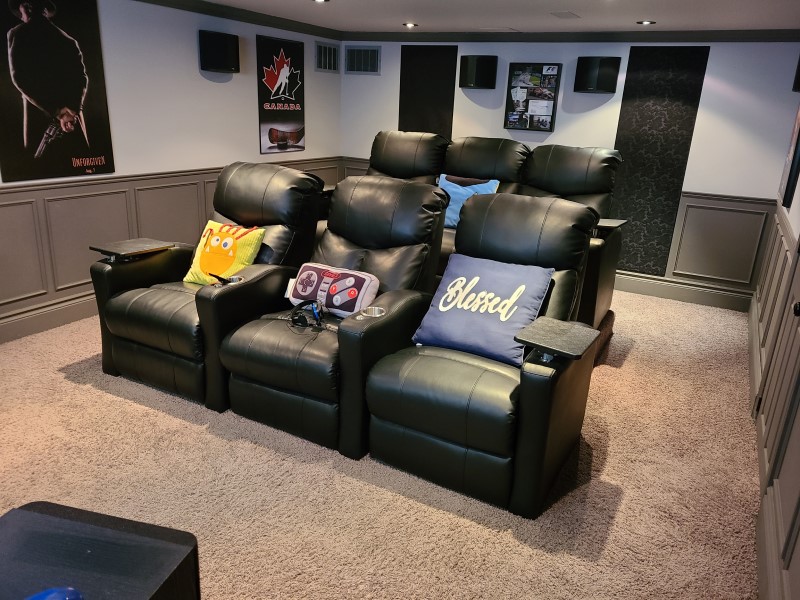Can You Have Too Much Bass?
As I peruse the Internet, I see some questions or statements come up that need correcting. Now, if you’ve ever been on a forum or visited Reddit, you know how much people LOVE to be corrected (that’s sarcasm by the way). So, rather than try to track down every instance, I thought I’d just cover it here. Usually, someone will say something like, “I bought X subwoofer(s) and now I have too much bass.” This is often a warning to others to not buy a product or an indictment against dual subwoofers. Now, I’m not arguing that they are experiencing “too much” bass. But I am saying that the subwoofers weren’t the problem. Let me explain.
What is Too Much Bass?
If you have to ask, you’ve never experienced it. Let me tell you a story. When I received my first real subwoofer, I followed all the online suggestions. I plugged it in, set the volume to half, and turned it on. It was so loud I could feel my teeth rattling. I could feel the bass in my stomach. It felt like it was shaking my brain. That was too much bass.
But there is a different kind of “too much” bass. This is what most people are experiencing. They’ve run their room corrections program, they’ve calibrated as best they can, and everything sounds fine. Until it doesn’t. With certain movies, at specific moments, the bass gets so loud as to be unbearable. That’s clearly too much.
In the first example, the subwoofer was just turned up too high for the space. The fix is easy – turn it down. The second example? That’s a little more complex.

Subwoofers and Your Room
We’ve talked a lot about how your subwoofer(s) interact with your room to create the bass you experience. That interaction is key to this problem. Placing dual subwoofers optimally can alleviate (or at least ameliorate) this issue. But if you only have one subwoofer, or if you have a non-rectangular room that is not enclosed, you can have this problem of too much bass at very specific frequencies. So what is happening?
As the bass waves bounce around your room, they are crossing each other. At some points, they cross each other and cancel the sound out. We call these nulls. At other points, they cross each other and add. We call these peaks. When they add to each other, they can get very, very loud. In nearly every case, it is these bass wave interactions that are causing the “too much” problem. But don’t worry, there are things you can do!
Author’s Note: The REAL solution is to place two subwoofers properly. We are going to assume this is not possible in your space. If you haven’t followed our dual subwoofer setup guide, that is step number one. You should also look at adding absorption to your room. Again, we are assuming that you have done all you can on this front and the problem persists.

Check Subwoofer Placement
Too often people get their new subwoofer, plop it in a corner or up at the front of the room, and wonder why it sounds bad. Well, as we’ve said, the subwoofer works with the room to create the bass. If you aren’t thoughtful about placement, then you are leaving the results up to dumb luck. If you have a single subwoofer, or dual subs, getting the best bass isn’t about where the subwoofer looks good in the room. It is about proper placement.
On top of that, if you’ve recently added or subtracted something from your room, placement may need to be double-checked. In a single subwoofer setup, this is particularly important. If you’ve swapped your plush, microfiber couch out for leather recliners, this can affect the bass in the room. Check that subwoofer placement to see if that is the problem.
Rerun Your Room Correction
Next, you probably need to rerun your room correction program. You’ll need to be very careful about your microphone placement. Follow our guide for best results. If your room is very reflective, you will have very uneven bass across your seats. Your room correction can’t do much to fix one seat without making the others worse. It can happen that measurement anomalies can affect your results. Rerunning your room correction can be all you need to fix your problem. Otherwise…

Something Has to Move
While bass waves can be very long, these peak areas of additive bass are very location-specific. If you can find the specific frequencies that are the problem, and download a test tone of that frequency (or just put the scene on repeat), you can test this. Get the sound playing and then move around the room. You’ll likely find that the overly-loud bass almost disappears just a few feet away from where it was unbearably loud.
So, you’ve got some options. You can move your seat or you can move your subwoofer(s). While this will not eliminate the peaks, it can move them away from your seat. Now, it may make it better for one seat while worse for another. That’s the nature of the beast here. It will take a lot of experimentation and a little luck to move the peaks off all the seats.
But Wait! My Other Subwoofer Didn’t Do This!
We don’t doubt it. This problem most commonly happens when people get their first “real” subwoofer. What they had before might have been called a subwoofer, but it didn’t play low or loud enough. Now that they have a “real” subwoofer, they have too much bass. What they actually have is very low bass that they never had before. And by adding that bass, they’ve revealed that they have a problem with their room.
Believe us, this is a good problem. Because you now have all the bass that you were missing. Yes, it isn’t the most even bass, but we’ll try and fix that. We can’t stress enough the importance of treating your room. By adding sound-absorbing panels, you reduce the intensity of the bass bouncing around your room. At the lowest frequencies, proper placement makes more of a difference, but absorption helps with everything else. Treating your room as best you can, will help ensure you get the best, and most even, bass possible. If you can’t do any more to your room, try the above suggestions. Hopefully, you can cut down on those peaks. If not, the last solution is to just turn the subwoofers down. But no one wants to do that, do they?






